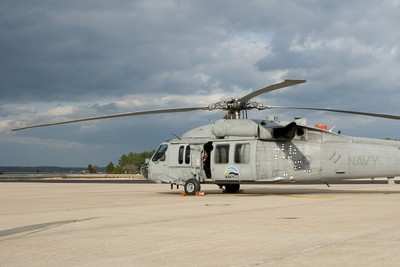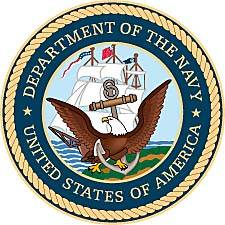The Helicopter Tested A Fuel Mixture Made From The Camelina
Seed
Moving closer to achieving the objective of decreasing its need
for petroleum-based fuels, the Navy flew an MH60S Sea Hawk on a
50/50 biofuel blend Nov. 18 in Patuxent River, MD. The helicopter,
from Air Test and Evaluation Squadron 21 at Naval Air Station
Patuxent River, MD, tested a fuel mixture made from the Camelina
seed, which is in the same family of plants as the mustard seed and
rapeseed. Camelina needs little water or nitrogen to flourish and
can be grown on marginal agricultural soil.

Navy Seahawk Helicopter
"These biofuels provide the Navy with an 'off-ramp' from
petroleum to increased energy security," said Rear Adm. Philip
Cullom, director, Navy Task Force Energy.
Friday's tests focused on the MH60S, one of the Navy's newest
helicopters. The mission of the MH60S is anti-surface warfare,
combat support, humanitarian disaster relief and search and rescue,
aero medical evacuation, special warfare and organic airborne mine
countermeasures. Earlier this year, the Navy tested this biofuel
blend on the F/A-18 Super Hornet. Results from those tests
indicated the aircraft performed as expected through its full
flight envelope with no degradation of capability. "We expect
today's helicopter tests will further demonstrate this fuel made
from an alternative, non-petroleum feed stock is a viable option
for use in Navy aircraft," said Rick Kamin, the Navy Fuels
lead.
According to Kamin, Friday's flight is another step toward the
certification of fuels from non-petroleum sources for use in all
Navy and Marine Corps aircraft. Testing will continue across
additional aircraft models in 2011 with a target of approving the
50/50 biofuel blend for use in the Navy ships and aircraft by early
2012. The Navy Fuels team embarked on its current path to certify
many alternative sources for fuel more than two years ago. At the
2009 Navy Energy Forum, Secretary of the Navy Ray Mabus committed
the Navy to a goal of decreasing its reliance on fossil fuels. The
Secretary outlined five energy targets at the forum. Closest to
home for the Navy Fuels team was the idea of demonstrating a Green
Strike Group by 2012.

"In October 2009, I issued five energy targets for my
department, the most important of which is that by the year 2020 -
a decade from now - half of all the energy we use afloat and
ashore, in the air, on the sea, under the sea or on land will come
from non-fossil fuel sources," said Mabus, in October 2010 at the
Energy Security Forum held at the Pentagon.
"The most significant impact of a dependence on fossil fuels is
on our people," said Mabus. "Getting a gallon of gasoline to a
Marine at forward operating bases (FOBs) in Afghanistan is not
easy. Every single day, young Sailors, Marines, Soldiers and Airmen
guard those vulnerable fuel convoys as they move from the logistics
hubs to our FOBs. Gasoline is the single thing we import the most
into Afghanistan."
"We have to change the way we operate. We have to change the way
we produce and we use energy," Mabus said.
 NTSB Prelim: Piper PA-23
NTSB Prelim: Piper PA-23 ANN FAQ: Submit a News Story!
ANN FAQ: Submit a News Story! Classic Aero-TV: One Mans Vietnam
Classic Aero-TV: One Mans Vietnam ANN's Daily Aero-Linx (07.03.25)
ANN's Daily Aero-Linx (07.03.25) ANN's Daily Aero-Term (07.03.25): High Speed Taxiway
ANN's Daily Aero-Term (07.03.25): High Speed Taxiway




